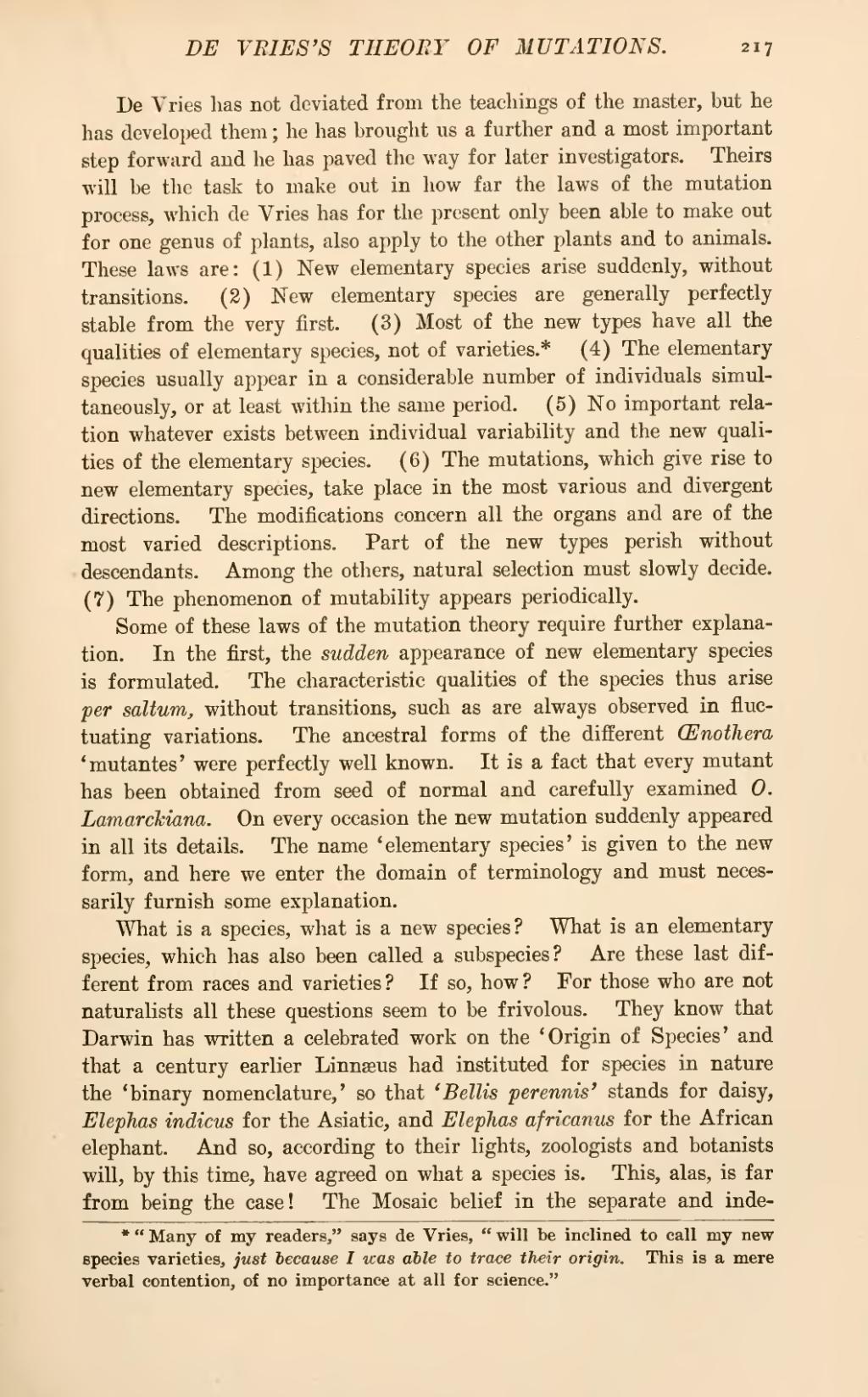De Vries has not deviated from the teachings of the master, but he has developed them; he has brought us a further and a most important step forward and he has paved the way for later investigators. Theirs will be the task to make out in how far the laws of the mutation process, which de Vries has for the present only been able to make out for one genus of plants, also apply to the other plants and to animals. These laws are: (1) New elementary species arise suddenly, without transitions. (2) New elementary species are generally perfectly stable from the very first. (3) Most of the new types have all the qualities of elementary species, not of varieties.[1] (4) The elementary species usually appear in a considerable number of individuals simultaneously, or at least within the same period. (5) No important relation whatever exists between individual variability and the new qualities of the elementary species. (6) The mutations, which give rise to new elementary species, take place in the most various and divergent directions. The modifications concern all the organs and are of the most varied descriptions. Part of the new types perish without descendants. Among the others, natural selection must slowly decide. (7) The phenomenon of mutability appears periodically.
Some of these laws of the mutation theory require further explanation. In the first, the sadden appearance of new elementary species is formulated. The characteristic qualities of the species thus arise per saltum, without transitions, such as are always observed in fluctuating variations. The ancestral forms of the different Œnothera 'mutantes' were perfectly well known. It is a fact that every mutant has been obtained from seed of normal and carefully examined O. Lamarckiana. On every occasion the new mutation suddenly appeared in all its details. The name 'elementary species' is given to the new form, and here we enter the domain of terminology and must necessarily furnish some explanation.
What is a species, what is a new species? What is an elementary species, which has also been called a subspecies? Are these last different from races and varieties? If so, how? For those who are not naturalists all these questions seem to be frivolous. They know that Darwin has written a celebrated work on the 'Origin of Species' and that a century earlier Linnaeus had instituted for species in nature the 'binary nomenclature,' so that 'Bellis perennis' stands for daisy, Elephas indicus for the Asiatic, and Elephas africanus for the African elephant. And so, according to their lights, zoologists and botanists will, by this time, have agreed on what a species is. This, alas, is far from being the case! The Mosaic belief in the separate and inde-
- ↑ "Many of my readers," says de Vries, "will be inclined to call my new species varieties, just because I was able to trace their origin. This is a mere verbal contention, of no importance at all for science."
